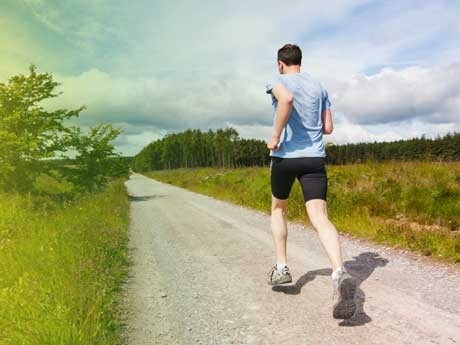Get moving: a physio’s ideas for being active… not injured!
25 June 2019
How can you avoid common injuries and why are your core muscles so important? Physiotherapist Rebecca Dodson gives us her answers and some great tips for staying injury free when you’re being active!
There’s a bit of a misconception about the core…
People often think that it means abdominal muscles. Actually, your core muscles include your diaphragm, pelvic floor, buttocks and back muscles as well as your abdominal muscles.
Your core muscles are central to every movement you make…
That’s because the other muscles in your body are connected to them. So, if you have weak or tight core muscles every movement you make is affected. Strong core muscles play a central role in keeping your whole body injury free.
Your core can also affect some of the vital organs in your body. If your diaphragm is weak it can restrict your lungs and your breathing. And your pelvic floor muscles affect your bladder and bowel function.

Four things to keep your core in good working order…
- Posture, posture, posture! Studies show that good upright posture when you sit activates your core, including your pelvic floor. If you’re at a desk and sitting with good posture, you’re actually doing something to help strengthen these muscles, but as soon as you slouch, they switch off.
- Relaxed deep breathing. This is another good way to encourage core activation – especially for your pelvic floor. Take some relaxed breaths in and out. It may seem like you’re not doing too much but actually, you’ll be strengthening your core!
- Movement! Movement and exercise help activate your core, improve circulation and encourage deeper, diaphragmatic breathing.
- Exercises specifically for the core. Yoga and pilates are examples of exercise that incorporates deep core stability muscles – which are important for posture – as well as a focus on breathing and the pelvic floor. Specific core strength exercises that work the bigger, more superficial layers of the core are important too for core stability and trunk movement for physically demanding tasks.
Undertaking sport specific warm-ups can reduce injury rates by as much as 50%...
So, make sure you warm-up properly before you exercise. If you play social sport, I’d really encourage your team to take a look at the ACC Sport Smart warm up programme. If you play football try FIFA’s Fit4Football and for netball take a look at NetballSmart.
One of the most preventable complaints physios see is back and neck pain…
To reduce your potential for this good posture is crucial. If you work at a desk, make sure your set-up is right. Your feet should be flat on the floor, or on a foot stool, so that your knees are at hip height and your screen is at eye-level. When you’re at home on the couch, sit up straight, make sure your back is supported. If your couch is low and deep, use extra pillows behind you to support the curves in your lower back. In the car, too, make sure your seat is adjusted to suit your height. Use the lumbar support function if your seat has one or a rolled towel or lumbar roll behind your lower back if you don’t.
It’s also easy to hurt your neck slouching over your phone. Put it down and look up! And remember to stand and move regularly, if you’re seated for a long period of time.

About Rebecca Dodson
Rebecca has trained and worked as a musculoskeletal and sports physio for 20 years. Over the past 10 years her passion for women’s health led her to specialise in pelvic floor physiotherapy, pre- and post-natal exercise, clinical pilates and acupuncture. She is a leader in women’s health and in 2015 established Leto Women’s Health with fellow physiotherapist and women’s health leader Stacey Law.
The information in this article has been compiled from various sources and is intended to be factual information only. Full details of policy terms and conditions are available from Asteron Life Limited or your financial adviser. For advice on product suitability, please contact your financial adviser. While we take reasonable steps to ensure that the information contained in this article is accurate and up-to-date, it is subject to change without notice. Asteron Life Limited and its related companies does/do not accept any responsibility or liability in connection with your use of or reliance on this article.
Keep reading

Insurance
What is Life Insurance?
You can't predict the future, but you can help protect yourself against it. Life Insurance can provide a lump sum of money if you die or become terminally ill. It is designed to help your family pay costs that you would have helped with if you were still alive.


